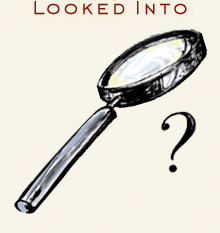Emdashes—Modern Times Between the Lines
The Basics:
About Emdashes | Email us
Ask the Librarians
Best of Emdashes: Hit Parade
A Web Comic: The Wavy Rule
Features & Columns:
Headline Shooter
On the Spot
Looked Into
Sempé Fi: Cover Art
The Wavy Rule, a Daily Comic by Pollux: As Good As It Gets?
Filed under: The Wavy Rule Tagged: cartoons, comics, health care, Jack Nicholson, Pollux, The Wavy Rule

Click on the image for a detailed view! (continued)
Hapworth 16, 1924: The Screenplay
Filed under: Looked Into Tagged: cinema, Gustave Flaubert, GÄyatrÄ«, Honoré de Balzac, J. D. Salinger, James Joyce, Leo Tolstoy, Martin Schneider, Miguel Cervantes, Nicolas Cage, Pollux, The New Yorker Digital Reader, Woody Allen

Pollux writes:
For many, J.D. Salinger’s short story “Hapworth 16, 1924” is a story that one feels obliged to read, if only to see what all the fuss is about. It certainly makes easier reading than Joyce’s Finnegans Wake, but for readers looking for structure and narrative, Hapworth may be a disappointment.
Nevertheless, Hapworth remains an object of wonder, due to the fact that it is the last piece of work that Salinger published. Its aura is increased by its inaccessibility in print, although if you have access to The New Yorker Digital Reader, you may read it in full in the June 19, 1965 issue. Just log in, turn the digital pages to page 33, and smile at the 1960s ads for booze, vacation spots, and Woody Allen’s “laugh record” (Volume 2). (continued)
Why Did Salinger Once Seem So Modern? It Was Not Holden Alone.
Filed under: The Squib Report Tagged: David Foster Wallace, J.D. Salinger, Jonathan Ames, Jonathan Lethem, Jonathan Safran Foer, Philip Roth

Martin Schneider writes:
A few days ago, on slender justification, I concocted a post about J.D. Salinger out of a news report I happened to see about the (either cancelled or postponed) premiere of a TV game show about child prodigies. The implied connection was fatuous—and yet it sparked a thought.
Until today I have shielded myself from the response to Salinger's death (although expect a roundup post on same anon), so I would have no way of knowing if the import of this post is trite or profound. I did notice that Garth Risk Hallberg at The Millions made the case that Salinger shifted the center of American literature from "manly" attributes like courage and honor to something more urban and intellectual—it doesn't take much imagination to trace that particular lineage. In the broadest sense Jonathan Lethem, Jonathan Safran Foer, Jonathan Ames, David Foster Wallace, and even Philip Roth are in Salinger's debt.
So okay—the intellect, add to it the focus on adolescence. That's two big parts of (continued)
The Wavy Rule, a Daily Comic by Pollux: Pepperidge Blues
Filed under: The Wavy Rule Tagged: cartoons, cheese, comics, food, Pollux, raccoon, squirrel, The Wavy Rule

Click on the image for a detailed view! (continued)
The Wavy Rule, a Daily Comic by Pollux: Groundhog Day
Filed under: The Wavy Rule Tagged: Barack Obama, cartoons, comics, groundhog, Groundhog Day, Pollux, The Wavy Rule

Click on the image for a detailed view! (continued)
The Wavy Rule, a Daily Comic by Pollux: Kraftiness
Filed under: The Wavy Rule Tagged: cartoons, chocolate, comics, food, Pollux, The Wavy Rule

Click on the image for a detailed view! (continued)
"It's a Wise Child" Possibly to Air on the Fox Network? Egad.
Filed under: The Squib Report Tagged: J.D. Salinger

Martin Schneider writes:
I didn't know until today that Fox has a show in the works that sounds for all the world like the modern-day version of the radio show that made the young Glass siblings national celebrities. Look:
Fox executives said the premiere of "Our Little Genius," originally scheduled to debut Tuesday after "American Idol," had been postponed and possibly cancelled over concerns about the integrity of the concept. The quiz show was supposed to pit super smart six to 12-year-old kids against Ivy League professors.(continued)
[snip]
The show's premise allowed the kids' parents to decide whether they keep answering
The Wavy Rule, a Daily Comic by Pollux: Suns and Daughters
Filed under: The Wavy Rule Tagged: cartoons, comics, Pollux, The Wavy Rule

Click on the image for a detailed view! (continued)
A Pair of Observations on the Passing of J.D. Salinger
Filed under: The Squib Report Tagged: J. D. Salinger, John Irving, John Updike, Joseph Heller, Kurt Vonnegut, Norman Mailer, Saul Bellow

Martin Schneider writes:
I cannot top Pollux's exemplary writeup here, so I won't try.
Instead I wanted to make two points about Salinger, one of which will be made many times in the days to come, and the other of which might well get missed in the hubbub.
1. Like many people, I read Salinger with great enthusiasm when I was in high school and college, and I haven't thought about him much in several years. I believe it became somewhat fashionable in recent years to dismiss Salinger as a what -- "minor author" or the like? -- and I never found that to be an astute or fair assessment. Salinger was the real (continued)
J.D. Salinger, 1919-2010
Filed under: In Memoriam Tagged: books, Holden Caulfield, J.D. Salinger, Pollux, Raychel Haugrud Reiff, William Keepers Maxwell, William Keepers Maxwell Jr., William Maxwell

Pollux writes:
“If Mr. Salinger is around town, perhaps he’d like to come in and talk to me about New Yorker stories.” So William Keepers Maxwell, Jr., The New Yorker’s fiction editor, wrote in 1947. Salinger would contribute several short stories to The New Yorker that year, beginning a career that was at once fascinating and strange, and in many ways, tragic.
There seems to be only one photo of J.D. Salinger: the black-and-white author photo that graced millions of copies of Catcher in the Rye. There are, of course, other photos of Salinger, but he will remain for us the young author with the 1950’s style haircut and intelligent face whose stories have become required reading in the library of American literature. (continued)







